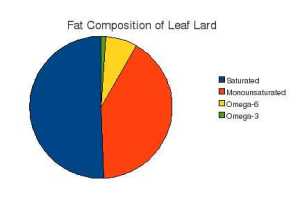The Coronary Heart Disease Epidemic: Possible Culprits
 Animal fat is off the hook.This is the type of information that makes mainstream nutrition advice ring hollow. Let’s see what happened to industrial vegetable oils in the early 1900’s.
Animal fat is off the hook.This is the type of information that makes mainstream nutrition advice ring hollow. Let’s see what happened to industrial vegetable oils in the early 1900’s.
Now remember that all corn oil is also genetically modified and made in a lab, which is not the way humans are suppose to consume foods. Humans are suppose to eat foods that are 100% natural and naturally grown.
Scientifically made foods such as corn, soy, cottonseed and some wheat’s are extremely dangerous to your health, and yes that means corn on the cob, shoe-peg corn, pop corn, corn oils ..any kind of corn is now made into franken-corn, soy sauce…please read all your labels for safety reasons.


I do believe we’re getting warmer. Now let’s consider the composition of traditional American animal fats and industrial vegetable oils:





It’s not hard to see that the two classes of fats (animal and industrial vegetable) are quite different. Animal fats are more saturated (blue). However, the biggest difference is that industrial vegetable oils contain a massive amount of omega-6 (yellow), far more than animal fats. If you accept the concept that humans evolved eating primarily animal fats, which is well supported by the archaeological and anthropological literature, then you can begin to see the nature of the problem.
Omega-6 and omega-3 fats are polyunsaturated fatty acids that are precursors to a very important class of signaling molecules called eicosanoids, which has something to do with virtually every bodily process. Omega-6 and omega-3 fats compete with one another for the enzymes (desaturases and elongases) that convert them into eicosanoid precursors. Omega-6-derived eicosanoids and omega-3-derived eicosanoids have different functions. Therefore, the balance of omega-6 to omega-3 fats in the diet influences the function of the body on virtually every level. Omega-6 eicosanoids tend to be more inflammatory and causes inflammation in the body.
What’s better understood is the fact that our current omega-6 consumption is well outside of our ecological road map. In other words, we evolved in an environment that did not provide large amounts of omega-6 all year round. Industrial vegetable oils are a product of food processing techniques that have been widespread for about 100 years, not enough time for even the slightest genetic adaptation. Our current level of omega-6 intake, and our current balance between omega-6 and omega-3, are therefore unnatural and can lead to many health complications down the road.
The ideal ratio is probably very roughly 2:1 omega-6:omega-3. Leaf lard is 6.8, beef tallow is 2.4, good quality butter is 1.4, corn oil is 45, cottonseed oil is 260. It’s clear that a large qualitative change in our fat consumption occurred over the course of the 20th century.
This was a major factor in the rise of heart attacks from an obscure condition to the primary cause of death.

